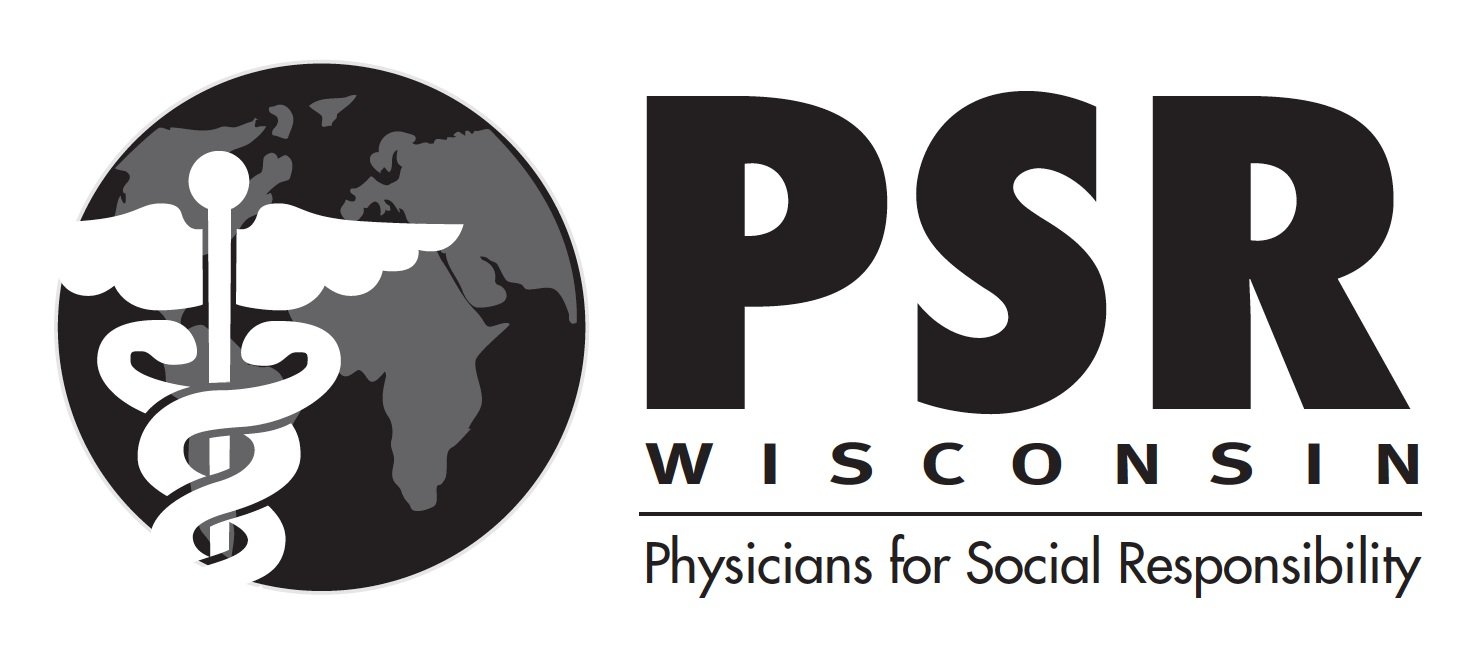Physicians for Social Responsibility condemns the Russian invasion of Ukraine and urges immediate de-escalation of this conflict.
The harm to civilians must end and we must prevent what we cannot cure.
This Viewpoint from JAMA Network discusses the potential for use of nonconventional warfare threats (chemical, biological, radiological, nuclear, and explosives) in the conflict in Ukraine and how health care professionals need to recognize and respond to these threats.
Since the 1970s, PSR National and PSR Wisconsin have advocated for abolition of nuclear weapons and clean, safe energy production. The war in Ukraine intensifies the urgency to prevent any and all use of nuclear weapons and eliminate the long-lasting risks to health and the environment from accidental or intentional damage to nuclear power plants.
We are concerned with the massive death and injury of civilians, the Ukrainian refugee crisis with more than 4 million fleeing the war and many trapped in besieged cities without access to food or medical care, the senseless damage to cities and infrastructure and to the beautiful environment of Ukraine. The World Health Organization (WHO) reported that as of April 7th, there have been 103 attacks on the health care system in Ukraine (89 have impacted health facilities and 13 have impacted transport, including ambulances).
Threat of Nuclear War
The current horror of the conflict in Ukraine is intensified by Russian President Valdimir Putin’s March 2nd order for his nuclear deterrence forces to be put on high alert, “the first time since the Russian Federation was established in 1991.” Learn more >>
President Putin then warned that he may use Russia's nuclear weapons. Russia and the US hold about 90% of the world’s nuclear arsenal and both share a doctrine of “first use” of nuclear weapons meaning both will use nuclear weapons first if it means a strategic advantage in a conflict.
Battlefield use of new tactical nuclear weapons increases the risk of these weapons being used by both sides and rapidly escalates the risk of full-scale nuclear war. Even these ‘small’ 0.3 KT tactical weapons would create a fireball 300 feet across with “flames and explosion [that] could destroy residential buildings and cause life-threatening burns to anyone within about 1,000 feet and deliver a lethal dose of radiation to anyone within about 2,000 feet.” Learn more >>
The only way to guarantee that nuclear weapons are never used is to decrease nuclear weapons arsenals and work towards elimination of all nuclear weapons.
Threat of Nuclear Energy Disasters
Russian seizure of the Chernobyl nuclear power station, closed since its accidental meltdown in 1986, and Russian Army assault and seizure of the active Zaporizhzhia nuclear plant demonstrated again to the world the vulnerability of nuclear sites to damage from conventional weapons and risk of a catastrophic nuclear environmental release. We saw how fires, looting, lack of trained nuclear operators and damage to critical infrastructure, including power disruptions necessary for cooling spent fuel, jeopardize the lives and environment not only of the surrounding communities but also to the larger region and the world.
At Zaporizhzhia, Russian forces fired artillery shells into one of the cooling units in early March 2022. According to the nuclear plant spokesman Andriy Tuz, “shells were falling directly on the facility and had set fire to one of its six reactors. That reactor is under renovation and not operating, but there is nuclear fuel inside” (Source). This attack on a sensitive and high-risk facility creates an incredible risk of a disaster and brings forth the memories of Chernobyl.
At Chernobyl, the world’s worst nuclear disaster, Russians took over the facility and the Exclusion Zone in late February 2022. On March 31, 2022, Russians troops withdrew from Chernobyl. The takeover jeopardized the stabilization of the site, risking further contamination and damage to the environment and people. Russian troops were reportedly exposed to intense radiation as they were digging trenches in the Red Forest. Russian troops also “looted and destroyed a lab close to the abandoned nuclear plant, which was used to monitor radioactive waste” (Source). Then Chernobyl was for several days was “disconnected from the nation’s power grid by Russian forces…potentially jeopardizing the cooling of nuclear material stored at the site” and relying on diesel generators. (Source).
Nuclear energy is not a safe energy source, and we must decrease our reliance on nuclear energy. We need a commitment for transition to renewable energy sources with access to improved energy conservation — both actions that will reduce carbon sources and temperature increases and increasing natural catastrophes from climate change.



